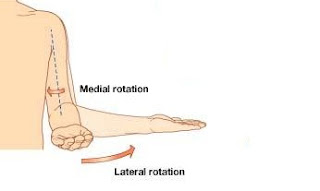Sit up straight. Don't slouch your shoulders. Don't slump against the wall. Wonder what's going on? Well, here's something we have been hearing since our childhood and something that we are going to tell our younger ones to be careful with. If you happen to be a gym going guy, you would probably know how important it is to maintain a proper posture in order to perform different physical exercises. A negative arch in the back while performing dead-lifts and retracted shoulders when performing pectoral press or fly movements are customary. Let's dig into this anatomically.
A healthy and functional body is definitely a concern for everyone regardless of age, sex, body type or occupation. In order to keep the body fit and operational in the long run, it's important that one pays enough attention to maintaining a proper form and posture while doing stuff all day. Let's discuss some basic terminologies related to posture and motion.
Sitting Posture : Mistakes and Corrections
To start with, let's know about the different positions we could put our spine into while sitting.

- Slumped Posture : Slouched shoulders with a bent back
- Neutral Spine : Relaxed muscles and natural spine curve
- Erect Posture : Retracted shoulders and forcibly tightened back
Our spinal cord is made such that when aligned in a natural position with perfect arches it could provide the best stability and shock absorption. In case you happen to align it wrong while sitting or lying down, the stability and shock absorption factor suffer a setback and secondary muscles come into play to maintain the stability of the position you're in. This obviously puts unwanted stress on the spine and the muscles. Why not understand this in a little more detail?
Ischial Tuberosity or the pair of sitting bones you see in the animation above, form the lower most part of the pelvis. Pelvis is of course the butterfly shaped bone structure you see attached to the end of the spine. It's the position of the sitting bones that decides the alignment of the spine when you take a seat. You sit on the lower faces of the sitting bones and your spine gets neutrally aligned. You bend you back and sit by the tip of the pelvis and it stretches your spinal curve. This may damage the connective tissues around the pelvis and further restrict mobility of the joints.
Basic Movement Terms
Having discussed the basics about sitting posture, let's now turn it to the most used terms that describe physiological movements.
- Abduction : The movement of a limb or other part away from the mid-line of the body, or from another part.
- Adduction : The movement of a limb toward the mid-line of the body. It's just the opposite of abduction.
- Lateral Rotation : The rotation of a limb away from the mid-line of the body. It's also called external rotation.
- Medial Rotation : The rotation of a limb towards the mid-line of the body. It's also called internal rotation.
- Concentric Contraction : Contraction in the muscle that cause the muscle to shorten is called a concentric contraction in that muscle. For example : Lifting up a dumbbell during a bicep curl.
- Eccentric Contraction : Contraction in the muscle that cause the muscle to lengthen is called an eccentric contraction in that muscle.
Note:- Contraction doesn't necessarily mean shortening. As in the case of Eccentric contraction, the muscle is forced to lengthen more than it's normal length under the influence of an external load. For example : Bringing down the dumbbell during a bicep curl. Even with the hands going down and holding the dumbbell the bicep muscle stretches under the influence of an eccentric contraction.
Can you now identify what physiological movement do the following exercises involve?
Pectoral Fly
Shoulder Lateral Raises
Hamstring curl












No comments:
Post a Comment